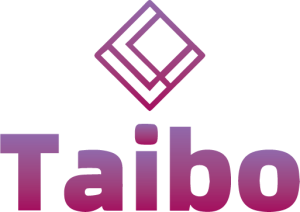In the competitive market of honey production and retail, the quality of product packaging can greatly affect the product’s competitiveness. Sealing honey jars is a key factor in maintaining the product’s freshness, taste, and overall quality. The right seal not only ensures that the honey is not contaminated but also retains its natural sweetness and extends its shelf life. For glass honey jar retailers, wholesalers, and food brands, mastering sealing technology is essential to maintaining product quality and meeting consumer demands.
In Taibo Glass, we understand the complexities of honey glass jar sealing. With our extensive experience and expertise in glass packaging, we are well-positioned to provide solutions that address common sealing challenges and enhance your packaging strategy. This article delves into the importance of effective sealing, provides practical tips for achieving optimal results, explores common sealing issues, and demonstrates how Taibo Glass can provide the perfect solution for your honey packaging needs.
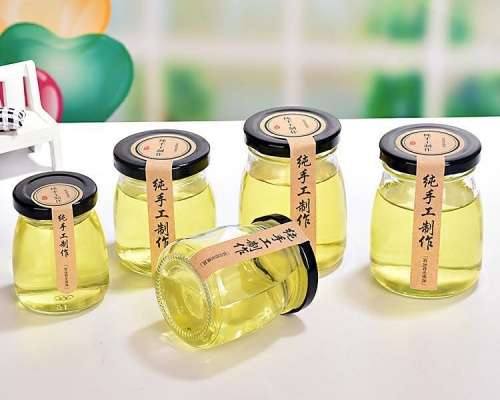
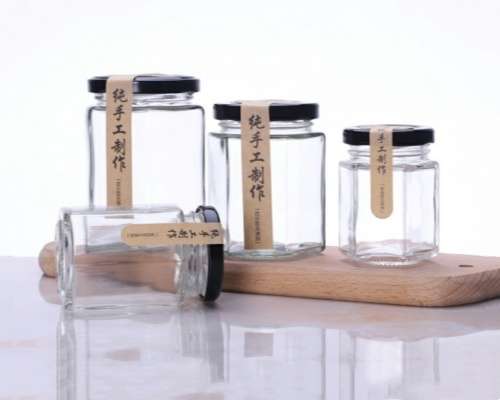
Importance of Sealing Honey Jar
Sealed honey jar preserve the freshness and flavor of honey. If the honey jars are not properly sealed, the honey is exposed to air which can lead to oxidation, which can cause flavor degradation and texture changes. Well-sealed jars create an airtight environment that helps preserve the original taste and consistency of the honey, ensuring that consumers can enjoy the same high-quality product throughout its shelf life.
Contamination is a major concern with food packaging, and honey is no exception. A proper seal protects honey from external contaminants such as dust, moisture, and microorganisms. An effective seal helps prevent spoilage and maintain product quality, reducing the risk of foodborne illness and ensuring the product is both safe and appealing to consumers.
Well-sealed jars can significantly extend the shelf life of honey and reduce the risk of spoilage. Sealing jars prevents honey from being exposed to air and moisture, which further extends the shelf life of honey. This minimizes waste and allows honey to be stored and enjoyed for a long time without affecting its quality, which benefits both producers and consumers.
The quality of your glass bottle packaging reflects your brand’s commitment to excellence. Well-sealed honey jars not only protect your product but also build a positive brand image. High-quality packaging fosters consumer trust and loyalty, making your product stand out in a competitive market.
1. Choose the right honey jar
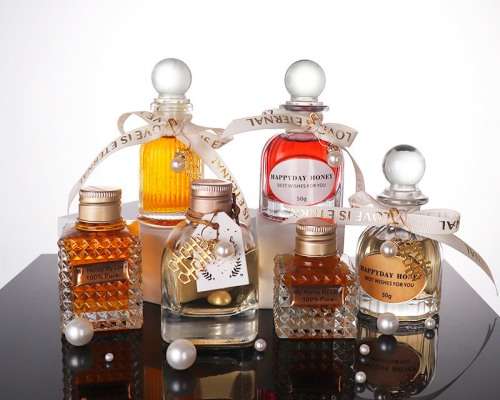
The choice of glass honey container is critical for effective sealing. The size and material of the jar should match your honey packaging needs:
Size: Choosing the right honey jar size is critical to meeting market needs and packaging requirements. Mini honey jars are suitable for samples, gifts, or single servings of honey, while large honey jars are suitable for bulk purchases or family-sized honey. Make sure the honey jar size matches the intended use and target audience.
Material: Glass is the material of choice for honey packaging because it is non-reactive and maintains the quality of the product. High-quality glass jars help prevent chemical reactions that can affect the taste and safety of the honey. Glass also has an aesthetically pleasing appearance and increases the perceived value of the product. Ensure the glass jar used is strong, durable, and can withstand sealing.
2. Choose the right honey jar lid and sealing method
Lids and sealing methods are a critical part of achieving a safe and effective seal:

Lids should fit the jar perfectly and provide a good seal. There are a variety of lids to choose from, including metal screw lids, snap-on caps, and specialized honey caps with sealing gaskets. Lid materials should be compatible with glass jars and provide a reliable seal to prevent leaks and contamination.
Sealing methods
Heat sealing: This method requires heat to bond the sealing material to the rim of the jar. Heat sealing provides a tamper-proof seal and is suitable for mass production. Make sure the sealing equipment is properly calibrated to achieve consistent results and prevent over- or under-sealing.
Shrink bands: Shrink bands are placed over the lid and neck of the jar and then heated to shrink, tightly wrapping the jar. This method provides tamper-proof protection and adds a barrier against contamination. Shrink bands can effectively secure the lid and provide visual evidence of tampering.
Wax seals: Wax seals are formed by dipping the lid into melted wax to form a seal. This traditional method has a high-end appearance and a tight seal, but it is labor-intensive and best suited for small batches. Wax seals have a unique and beautiful appearance, but require careful handling to ensure a consistent seal.
3. Check the sealed honey jar regularly
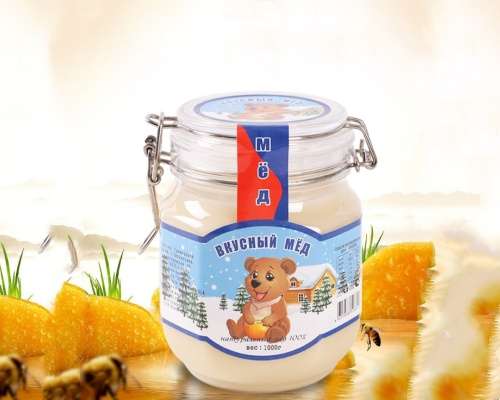
Regular inspection of the seal is essential to ensure its long-term effectiveness. Even well-sealed jars can develop problems, so it is important to regularly check to ensure that the jars remain sealed:
Initial Inspection:
Once sealed, visually inspect each jar to ensure that the lid is securely fastened and there are no signs of leaks or gaps. If necessary, perform a pressure test to verify the integrity of the seal.
Ongoing Monitoring:
Regularly inspect the condition of sealed jars, especially after several months of storage. Watch for any signs of spoilage, such as bulging lids, leaks, or changes in the appearance or consistency of the honey. Resolve any issues promptly to prevent spoilage and maintain product quality.
4. Clean your honey jar regularly
Maintaining cleanliness is critical to effective sealing and overall product quality:
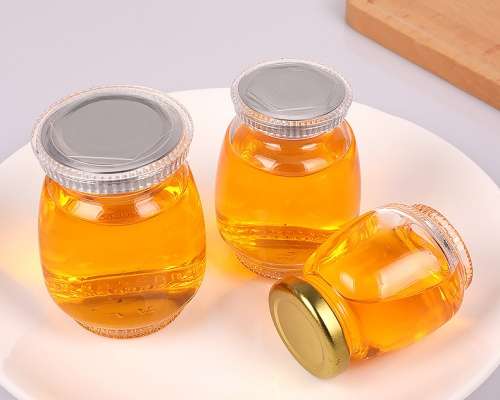
Pre-packaging cleaning:
Before filling the honey into the empty glass jars, ensure that the jars are thoroughly clean and free of residue. Any residual particles or contaminants can interfere with the sealing process and affect the jars’ ability to maintain a seal. A high level of cleanliness can be achieved using proper cleaning methods and equipment.
Post-packaging cleaning:
Wipe the outside of the jars to remove any honey residue that may affect the seal. Regularly cleaning the glass honey jar surfaces helps maintain a professional appearance and ensures hygiene. Implement a cleaning protocol that addresses both pre-packaging and post-packaging needs to maintain quality standards.
Common problems with honey jar sealing
Several challenges can arise during the sealing process that can affect the quality and safety of your honey. Identifying and resolving these issues is critical to maintaining packaging integrity:
An improper seal is when the lid does not seal perfectly, allowing air to enter the jar. This can lead to crystallization, spoilage, and a deteriorated taste.
Lid compatibility is critical to achieving a proper seal. Using an inappropriate lid can lead to leaks and an ineffective seal.
Defects in the sealing material, such as a damaged gasket or poor-quality lid, can compromise the seal and lead to potential contamination. Regular quality checks and sourcing materials from reputable suppliers can help prevent these issues.
Honey is sensitive to temperature fluctuations, which can affect the sealing process. For methods such as heat seals and shrink bands, improper temperature control can lead to seal failures.
Conclusion
Proper sealing is an important aspect of honey packaging that directly impacts product freshness, quality, and consumer satisfaction. By understanding the importance of proper sealing, implementing practical tips, and addressing common issues, you can ensure the quality of your honey products.
Taibo Glass is committed to providing top-quality glass honey jars wholesale and sealing solutions that meet industry standards and exceed expectations. We offer a wide variety of glass jars, durable lids, and custom packaging options designed to help you achieve packaging excellence. Our commitment to quality and customer satisfaction ensures that your honey packaging not only meets but exceeds industry standards, thereby enhancing your brand reputation and providing your customers with a premium product.
